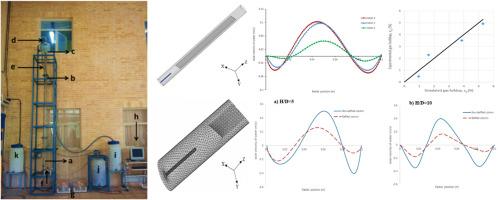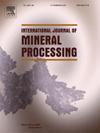Laboratory and CFD investigations of the two-phase flow behavior in flotation columns equipped with vertical baffle
Abstract
In this research, a numerical approach and a series of laboratory tests have been used to investigate the effect of vertical baffling and height to diameter ratio on the axial mixing in flotation columns. The baffle is a plate located perpendicular to the cross section of the column with a length of 2.8 m and thickness of 0.4 cm. The computational domain is a column with a circular cross section having a height of 3.2 m and a diameter of 10 cm. Three-dimensional simulations were executed using Eulerian two-phase computational fluid dynamics (CFD) models for both non-baffled and baffled columns. In order to reduce computing demand and simplify the problem, it was assumed that the column is already filled with water, and air enters from the lateral and upper surfaces of a cylindrical sparger with a length of 15 cm and a diameter of 1 cm located vertically at the bottom of the column. To validate the simulation results, a series of laboratory flotation column experiments have been performed under the above-mentioned conditions. Three-dimensional simulations were executed using an Eulerian two-phase model for both non-baffled and baffled columns. The simulated pressure values on the wall at 0.2 m and 2.8 m height of the non-baffled column were in good agreement with experimentally measured values with the highest relative difference of < 3.07%. Comparison of the computational results for the non-baffled and baffled columns showed that baffling can reduce water axial velocity up to 16.96%, which consequently reduces the axial mixing in the column and increases flotation recovery. Study of the effects of height to diameter ratio showed that effect of baffling in columns with lower aspect ratios is more prevalent for reducing the axial mixing.


 求助内容:
求助内容: 应助结果提醒方式:
应助结果提醒方式:


